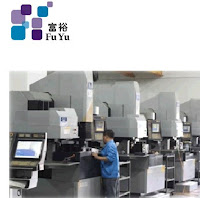In my last posting on whether is it time to buy into Industrial REIT, I have illustrated the poor rental charges of industrial properties using the JTC indexes from 2016 to 2018. All industrial property types pricing indexes with the exception of business parks have been in the doldrums. REITS with warehousing facilities such as Cache suffered the worst hit. The local warehousing space for logistics usage has not yet seen any significant recovery and prices still hover around S$1 per sqft in western Singapore relative to more than S$1.50 psf a few years back. The market climate remains challenging for industrial REIT due to the upcoming ready available supply of new industrial space.
I do not think that there are any hidden gems right now given the current operating environment and the recent run-up in most REITs pricing. The worrying global macroeconomic conditions may also further adversely affect this particular REIT segment. The higher yield from industrial REIT solely lies in the higher risk premium associated with such class of assets.
However, I have started selling off part of my other holdings (Singtel & Thai Beverage) and begin buying units in Mapletree Industrial Trust (“MIT”) at between S$2.01 to S$2.03. For this post, I will be skipping the historical financial performances review (which has been readily covered by analysts) and instead focused more on the future prospects of this REIT as well as the apparently more resilient earnings relative to other typical industrial REITS which should enable MIT to weather through any possible economic crisis better than its other rival industrial REIT. The main reasons for accumulating Mapletree Industrial Trust are due to the better quality properties in its stable of portfolio as well as their diversification into data centers segment which is a high in demand supporting segment for the new high tech digital economy. In addition, the close to 6% yield is a lot higher than my current weighted average portfolio return of 5.1% due to significant concentration in Retail REITs which are lower in terms of yield.
Background of MIT
MIT's portfolio comprises of 86 industrial properties in Singapore and 14 data centres in the United States of America (40% interest through the joint venture with Mapletree Investments Pte Ltd).
Background of MIT
MIT's portfolio comprises of 86 industrial properties in Singapore and 14 data centres in the United States of America (40% interest through the joint venture with Mapletree Investments Pte Ltd).
I have listed down some of the pull factors for investing into Mapletree Industrial Trust as per below:
(1) Mapletree has the backing of one super deep pocket and influential institutional investor
Mapletree has the full support of Temasek Holdings. Nothing much more needs to be said on what this means. The yield for MIT is thus lower relative to other Industrial REIT due to lower risk premium perceived by the market. The sponsor of MIT always seems to be able to get its hand on developing or acquiring many good quality properties. Another good example is Mapletree Commercial Trust ("MCT") that is holding on to Vivocity and Mapletree Business City. MCT has been elevated to "God like" status recently on the stock exchange and its price seems to have re-rated as evident in its ever rising prices and consequently, yield demanded by investors drop to slightly below 5% from the re-rating on its risk profile and good track record in its financial performance.
(2) Data centres in US and also conversion of additional local property into data centre
The internet of things and cloud services will continue to drive demand for data centres in the new economy. The business strategy to focus more on high-value industrial sector will drive the future growth of MIT as well as enhance its earnings resiliency.
In October 2017, MIT and its sponsor, Mapletree Investments entered into a joint venture to acquire 14 data centres in the United States of America for US$750Mil on a 40: 60 shareholding basis. This vital strategic acquisition thus extends Mapletree group's footprint in the fast-growing data centre segment.
The data centres are located on freehold land and leased out to 15 high-quality tenants from a diverse range of industries such as telecommunications, information technology as well as financial services. The tenated properties have a long weighted average lease to expiry of around 5 years with fixed annual rental escalation of 2% embedded growth.
In Singapore, MIT will be converting and upgrading its 7 Tai Seng Drive industrial property into a data centre. This is in collaboration with Equinix Singapore as it expands its presence locally. This builds on Equinix's current presence at 26A Ayer Rajah and 180 Peachtree, Atlanta in the United States. The work at 7 Tai Seng Drive is expected to be completed by second half of 2019 and will contribute positively to the rental income of MIT.
(Note: Equinix is a NASDAQ listed MNC headquartered in California that specializes in internet connection and data centres)
In October 2017, MIT and its sponsor, Mapletree Investments entered into a joint venture to acquire 14 data centres in the United States of America for US$750Mil on a 40: 60 shareholding basis. This vital strategic acquisition thus extends Mapletree group's footprint in the fast-growing data centre segment.
The data centres are located on freehold land and leased out to 15 high-quality tenants from a diverse range of industries such as telecommunications, information technology as well as financial services. The tenated properties have a long weighted average lease to expiry of around 5 years with fixed annual rental escalation of 2% embedded growth.
In Singapore, MIT will be converting and upgrading its 7 Tai Seng Drive industrial property into a data centre. This is in collaboration with Equinix Singapore as it expands its presence locally. This builds on Equinix's current presence at 26A Ayer Rajah and 180 Peachtree, Atlanta in the United States. The work at 7 Tai Seng Drive is expected to be completed by second half of 2019 and will contribute positively to the rental income of MIT.
(Note: Equinix is a NASDAQ listed MNC headquartered in California that specializes in internet connection and data centres)
(3) The recent acquisition of 18 Tai Seng- Star property as in literally 1 Michelin star
I used to have lunch at 18 Tai Seng. There is a soya sauce chicken rice restaurant at 18 Tai Seng that was opened by Hawker Chan who won the 1 Michelin star award at his original Chinatown Food Complex stall. The name of the outlet is “Liao Fan Hong Kong Soya Sauce Chicken Rice and Noodle”. Tim Ho Wan and also Jalan Kayu Roti Prata also took up retail outlet space at 18 Tai Seng.
Being a modern industrial development, 18 Tai Seng is a nine-storey special mixed use development that comprises of retail space, industrial and office all integrated into one. The building is connected directly to Tai Seng MRT via underground pedestrian link and easily accessible via public transportation and major expressways such as KPE, PIE and CTE. This property has a tenant base of 44 tenants including multinational firms in a high value-added services such as medical technology, information and communications technology and automotive technology. As at 13 December 2018, the committed occupancy rate was reported to be 94.3%.
The proposed acquisition of 18 Tai Seng for S$268 Mil announced in Dec 2018 is in line with MIT’s business strategy of a greater focus on hi-tech buildings.
(4) Mapletree Property Management Team
If you are a tenant or renovation contractor, you will not like the Mapletree Property Management Department during the handover back to landlord upon lease expiry. From my past dealings, AIMS AMP Capital and Cache are more willing to compromise in the sharing of disputed reinstatement cost as compared to Mapletree folks. Mapletree, on the other hand, are very notorious in the market for very stringent and demandng handing back conditions (they expect almost brand new conditions during handling back). But if you are an investor of MIT, you will absolutely love their Property Management team for enforcing such high standard and uncompromising stance. The Property Management team also enforces the same demanding regime in the maintenance of the common area defects and are aggressive in pushing back repair costs for damages to the tenants in a building.
Final Thoughts
I see good potential in the organic future growth of MIT especially with the recent acquisition of 18 Tai Seng as well as the venture into data centers with a focus on high technology sector tenants. Most importantly, there is good diversification in terms of its current tenants which will enable MIT to weather any major storm. Last but not least, this is a Mapletree REIT which have excellent pipelines of good properties from its sponsor for future injection into MIT as part of its asset recycling strategy.
























